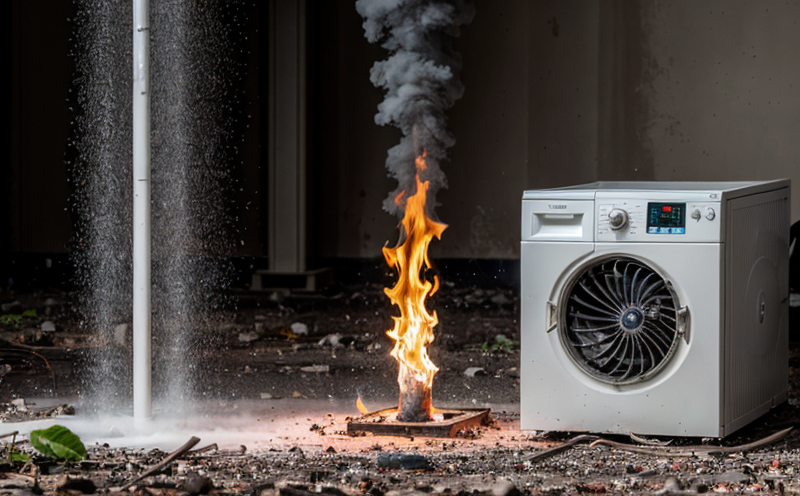UL 1973 Environmental Stress Testing of Stationary Energy Storage Batteries
The UL 1973 standard is a cornerstone in ensuring that stationary energy storage batteries (ESS) are reliable, safe, and capable of withstanding the harsh environmental conditions they may encounter during their lifecycle. This testing protocol is essential for manufacturers to ensure compliance with international safety standards before introducing these products into the market.
Environmental stress testing under UL 1973 encompasses a series of rigorous tests designed to evaluate how ESS batteries perform in extreme temperatures, humidity levels, and other environmental factors that could affect their functionality. These tests are critical for quality managers, compliance officers, R&D engineers, and procurement teams who need to ensure product safety and reliability.
The standard covers various types of stationary energy storage systems, including those used in residential, commercial, and industrial settings. The tests are conducted on the batteries themselves or their modules, depending on the scope specified by the client. This service ensures that the battery can withstand the environmental stresses it will encounter during its operational life.
The UL 1973 testing process typically includes a series of tests such as thermal cycling (temperature cycling between extremes), humidity cycling, and exposure to high and low temperatures. These tests are aimed at identifying any potential weaknesses or defects in the battery design that could lead to failures under real-world conditions.
During the testing process, the batteries are subjected to controlled environmental conditions that simulate actual operational environments. This ensures that the results of the test accurately reflect how the product will perform in a wide range of conditions. The tests are conducted in a controlled laboratory setting using specialized equipment designed to replicate real-world scenarios.
The UL 1973 standard is based on international standards such as ISO and ASTM, which helps ensure consistency and comparability across different testing laboratories worldwide. This standardized approach ensures that the results of the test can be relied upon by manufacturers, regulatory bodies, and end-users alike.
By undergoing this rigorous environmental stress testing process, battery manufacturers can demonstrate compliance with UL 1973 standards and ensure their products are safe and reliable for use in various environments. This not only enhances consumer confidence but also helps to meet the stringent requirements of regulatory authorities.
The benefits of adhering to UL 1973 extend beyond just meeting legal requirements; it also provides a competitive edge by ensuring that your product is among the safest, most reliable on the market. Compliance with this standard can lead to increased sales and better brand reputation, which are crucial for maintaining a strong market position.
For quality managers and compliance officers, UL 1973 testing offers peace of mind, knowing that their products meet rigorous safety standards. R&D engineers benefit from detailed insights into how the batteries perform under different environmental conditions, allowing them to make improvements where necessary. Procurement teams can rely on this testing process to ensure they are sourcing high-quality components and materials for their products.
Overall, UL 1973 environmental stress testing is an essential service for any organization involved in the design, manufacturing, or sale of stationary energy storage batteries. It provides a comprehensive approach to ensuring product safety and reliability while also offering valuable data that can be used to improve product performance and competitiveness.
Environmental and Sustainability Contributions
The UL 1973 testing process plays a crucial role in promoting environmental sustainability by ensuring that stationary energy storage batteries are reliable, safe, and capable of withstanding harsh environmental conditions. By adhering to this standard, manufacturers can contribute positively to reducing waste and promoting responsible use of resources.
One significant contribution is the prevention of failures in the field that could lead to hazardous situations. This helps ensure that the batteries function correctly throughout their lifecycle, thereby minimizing the risk of accidents or malfunctions. Additionally, by ensuring high-quality products, UL 1973 testing supports a circular economy model where products are designed for longevity and recyclability.
The testing process also promotes responsible use of energy storage solutions, which is crucial in the transition to renewable energy sources. By enhancing product reliability and safety, manufacturers can help reduce the environmental impact associated with battery production and disposal.
Competitive Advantage and Market Impact
The UL 1973 testing process provides a competitive advantage by ensuring that your products meet rigorous safety standards. This not only enhances consumer confidence but also helps to maintain a strong market position. By demonstrating compliance with this standard, you can differentiate your product in the marketplace.
Adhering to UL 1973 testing can lead to increased sales and better brand reputation. Consumers are increasingly concerned about safety and reliability when it comes to energy storage solutions. By meeting these standards, you can build trust with your customers and establish yourself as a leader in the industry.
The test results provide valuable data that can be used to improve product design and performance. This information allows manufacturers to identify areas for improvement, leading to enhanced product quality and customer satisfaction. Additionally, compliance with UL 1973 standards is recognized globally, making it easier to enter international markets.
Use Cases and Application Examples
| Application | Description |
|---|---|
| Data Centers | Battery systems for uninterruptible power supply (UPS) in data centers must be reliable under various environmental conditions. |
| Commercial Buildings | Backup batteries for commercial buildings need to withstand extreme temperatures and humidity levels. |
| Residential Use | Home energy storage systems require reliability even in challenging weather conditions. |
| Battery Type | Environmental Stress Test Parameters |
|---|---|
| Lithium-Ion Batteries | Thermal cycling between -20°C and 65°C, humidity cycling from 10% to 93%, exposure to high and low temperatures. |
| Polymer Batteries | Thermal cycling between -40°C and 85°C, humidity cycling from 10% to 93%, exposure to high and low temperatures. |





